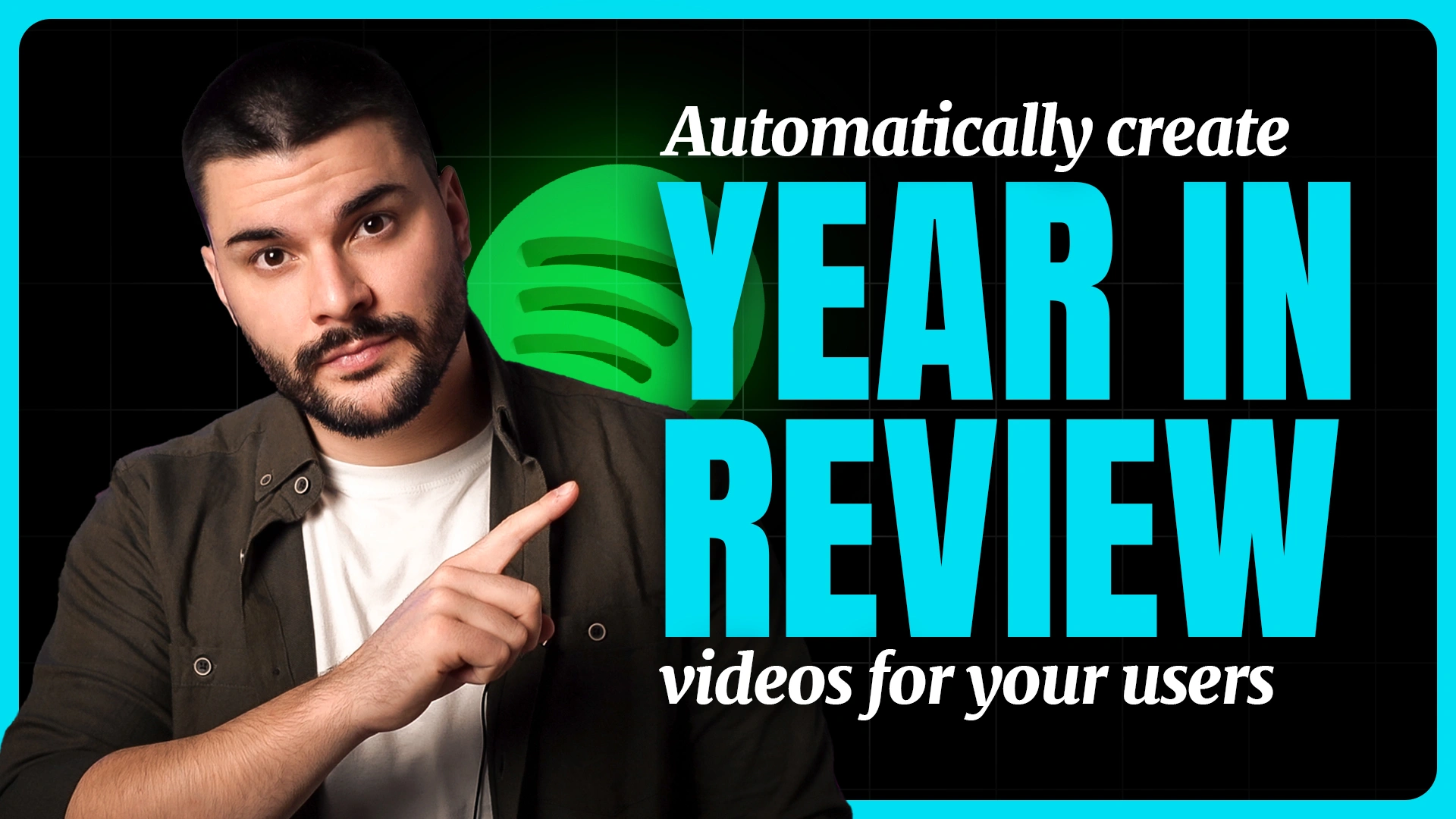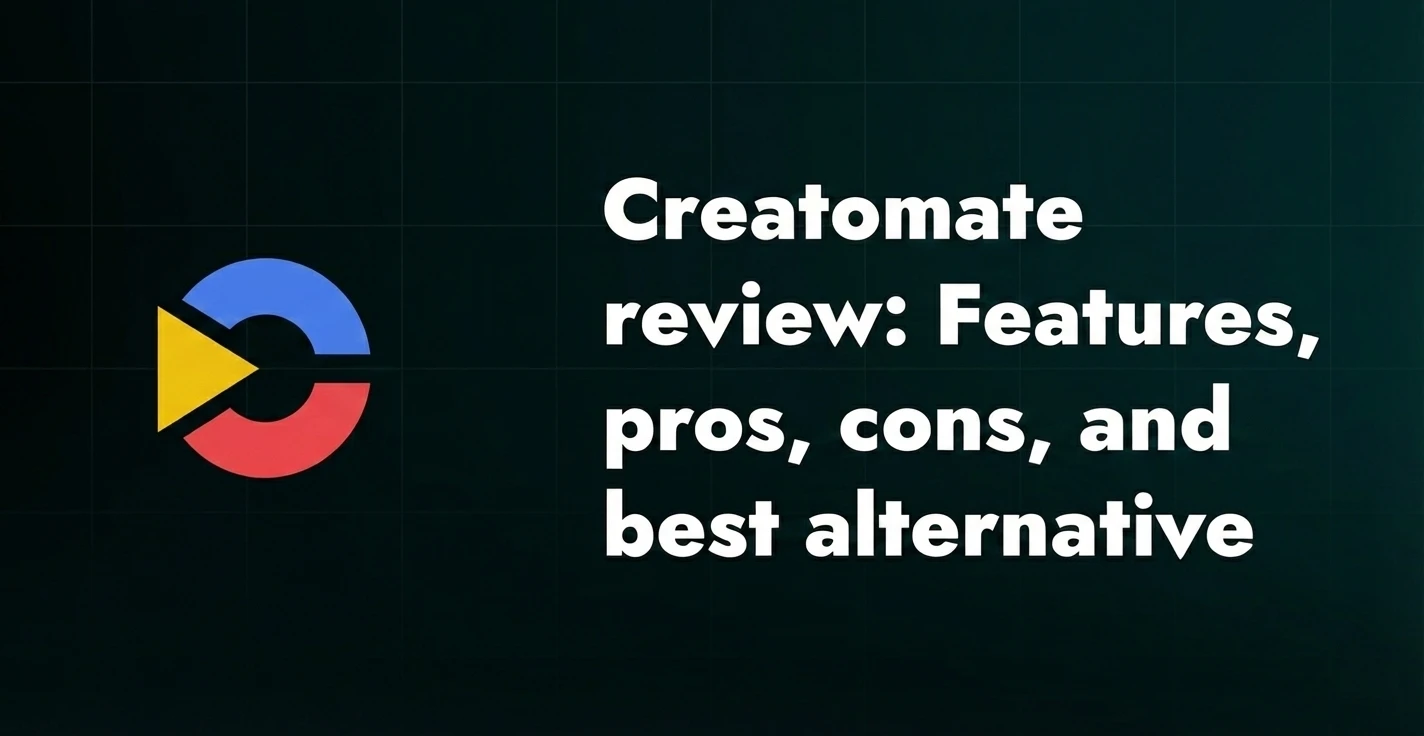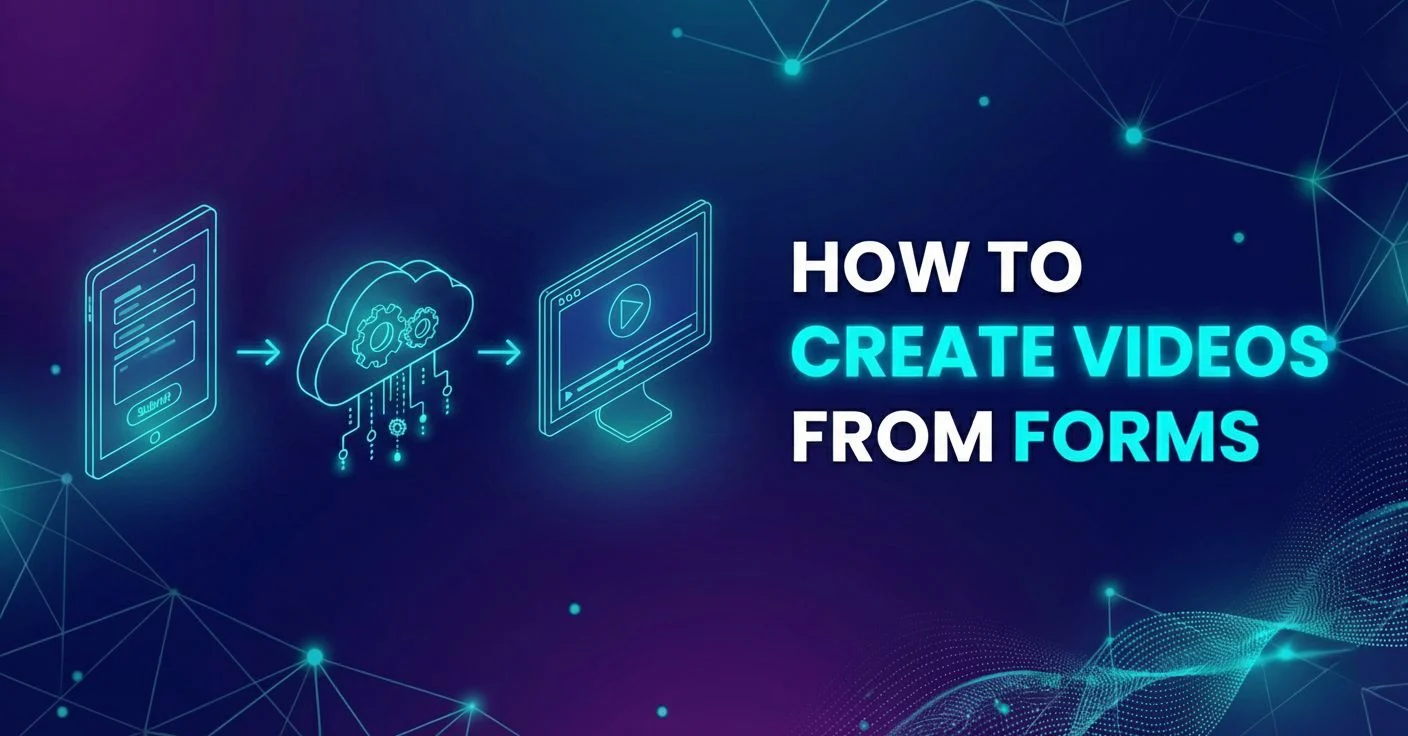Personalized video marketing: Everything you need to know in 2025

With attention spans at an all-time low, investing in personalized video marketing is non-negotiable in 2025. These videos retain viewers 35% longer than generic ones, which makes sense considering how much more relevant and engaging they feel. Attention aside, these videos also bring in more conversions, with 72% of consumers saying they’re more likely to make a purchase after watching personalized content.
Want in on the game but not sure if it’s for you or where to start? We’ll guide you through what personalized video marketing actually means, how it works, and what makes it worth doing. We'll also be drawing from our own experience in the video creation industry to teach you how to create a successful and truly personalized video campaign yourself
What is personalized video marketing?
Personalized video marketing is a data-driven strategy that sales and marketing teams use to create customized video content for each viewer. This is done by collecting audience data, such as browsing behavior, purchase history, location, or demographics, and using it to shape the content in a way that feels personally relevant. The idea is to keep the core video the same, but have specific elements (e.g., text, audio, visuals, etc.) adapt based on who’s watching.

How does personalized video marketing work
Behind every personalized video for individual customers is a simple but well-structured workflow.
This is how it all typically works:
- Data collection - The foundational step, which includes pulling data from your CRM, website, product analytics, or any tool that tracks user behavior.
- Viewer segmentation - The collected data is then used to group viewers into segments based on shared traits, behavior, stage in the funnel, etc.
- Video generation - Specific elements are swapped using customer data through a video automation software to create personalized videos for customers at scale.
- Video distribution - Once generated, custom videos are distributed through multiple channels, including email, social media, and other platforms.
Benefits of personalized video marketing
There’s a reason personalized videos are gaining traction.
After all, they perform better across the board, especially when it comes to engagement and conversions.
Higher viewer engagement
Personalized videos feel relevant from the first second, which is why they typically outperform standard videos in watch time and click-through rates. As we mentioned, personalized videos retain viewers 35% longer on average.
Increased conversion rates
People are more likely to act when the video messages have a personal touch. What’s more, personalized videos can boost conversions by up to 500%, as they address individual viewer needs and preferences directly.
Higher return on investment
When videos drive more engagement and conversions, they naturally deliver more value. In fact, personalized video campaigns have been shown to increase ROI by up to 280%.
Stronger brand connection & customer experience
The higher the level of personalization, the more likely people are to feel like your brand actually sees them. Personalized videos help create that sense of recognition, which builds trust and long-term loyalty over time. It’s no surprise, then, that 98% of marketers say video personalization improves customer experience and delivers superior customer support & customer satisfaction.
Scalable personalization
Thanks to automation, personalized videos don’t require hours of manual editing. Namely, a bulk video editor can help you generate hundreds or thousands of video versions from a single template, thereby making personalization achievable even for small teams.
Types of personalized video marketing
When it comes to videos, there’s more than one way to deliver a personalized experience.
There is no right or wrong way to do it. But the right type of video personalization to go with depends on your use case, your data, and how deep you want to go.
1. Data-driven personalization
Data-driven personalization pulls existing customer data (e.g., name, email, recent activity, product usage, etc.) and injects it directly into the video. The end content feels familiar because it’s based on something the viewer has done or interacted with.
When talking about the most well-known hyper-personalization examples here, we can’t help but mention Spotify Wrapped. Every year, Spotify creates fully personalized year-in-review videos for its users, showcasing their most-played songs, artists, and genres, paired with playful visuals and stats that make the whole thing feel shareable and personal. It’s a moment users look forward to, talk about online, and associate directly with the Spotify brand.
2. Dynamic personalization
Here, the video changes in real time depending on who’s watching. Instead of creating all versions up front, the viewer’s data is pulled live and used to render personalized elements on the spot.
Our client, Tapni, used this approach to recover lost conversions. They let users tailor custom digital business cards through their online tool, but many stopped short of buying. So, they used Plainly to set up a system where, if someone abandoned their design, a video showing their exact card would land in their inbox minutes later. Everything about the card (colors, layout, logo) appeared in the video, just as the user had created it.
The results? A 10% bump in conversions from those abandoned sessions.
3. Interactive personalized videos
These videos let viewers choose what happens next. Think of it as a ‘’choose your own path’’ personalized user experience, with clickable options that guide the viewer through different scenes or outcomes.
A well-known example of this is Black Mirror: Bandersnatch by Netflix. While not a marketing campaign per se, it showed how interactive video can create a deeper sense of involvement. Viewers could make choices for the main character in real time, leading to multiple storylines and endings.
In the marketing context, this format works well for product tours, quizzes, onboarding flows, or shopping experiences where the viewer controls what they learn or see next.
How to create personalized video campaigns in 8 steps
You don’t need a full dev team or weeks of production time to launch a personalized video campaign. What you do need, though, is a plan and a few tools - one of which is Plainly - to simplify the process.
That said, here’s how we do it.
1. Define your goal
Start by asking the right questions:
- What’s the purpose of this campaign?
- Who is it for?
- What action do you want viewers to take?
- How will success be measured?
Clarifying the goal early will shape the rest of your video marketing strategy: what data you use, what tone the video takes, and where it gets delivered.
2. Identify data points
Next, figure out which data actually matters to your message.
Some of the most commonly used data points include:
- First name
- Location
- Sign-up or join date
- Recent activity (e.g., browsing behavior, purchases)
- Product or plan type (to showcase relevant features or upsell opportunities)
- Job title
- Company name
The point here isn’t to use every data point, but the ones that make the video feel specific and relevant.
3. Create your video template
This is your base video - the one that stays consistent across all versions.
Now, you can use any video editor you’re comfortable with for the job. However, we do recommend you use After Effects, simply because it offers unmatched flexibility and options.
What’s more, working with it, you’ll have full control over how dynamic video elements (like text or visuals) are set up. Just make sure to name those layers clearly using a consistent prefix (for example, edit), so that a video automation software, a.k.a. Plainly, knows what to personalize later on.
4. Upload your template to Plainly

Once your video template is ready, it’s time to zip it up and upload it to Plainly. If you want to skip the manual upload, you can use our official Adobe plugin to send the project directly from After Effects with just a click.
Plainly will, then, automatically scan your file and list out all the layers. At this point, click ''Auto-generate,'' then choose the “Prefix” option, and enter the prefix you used when naming your dynamic layers.

This is how Plainly knows which elements in your video should be dynamic. It’s just a matter of pointing it to the right fields so it knows what to swap out and when.
5. Connect your data source
You can connect your data using CSV, Google Sheets, API, or one of the tools you already use. Where the data comes from depends on your workflow, but it should be easy to access and regularly updated if you're running the campaign long-term.
If you’re relying on a CSV file or using Google Sheets, though, know that each row in your file equals one video output. That means column names should match the parameterized layers from your template (e.g., editName, editProduct) so that the right content ends up in the right place.
6. Generate videos
Now you’re ready to hit render. Plainly takes care of the heavy lifting by creating each personalized version automatically. We always recommend testing a few examples before pushing the full batch, just to make sure everything looks right and nothing breaks.
7. Distribute personalized videos
Send the videos through the channels your audience already uses. This could be email (if using videos for email marketing), social media DMs, landing pages, or even embedded directly into your product or platform.
Plainly makes this rather effortless thanks to integrations with Mailchimp, YouTube, Google Drive, Dropbox, Zapier, and more. You can check out the full list here.
8. Track & optimize
Once your campaign goes live, keep an eye on its performance through video platforms like Wistia or built-in YouTube analytics for video engagement. Meanwhile, you can use Google Analytics 4 (GA4) to track conversions.
In terms of specific metrics, pay attention to view rates, average watch time, drop-off points, calls to action clicks, and conversion rates.
Then, tweak the data inputs, video timing, or delivery channels based on what’s working (or what isn’t).
Ready to launch your first personalized video marketing campaign?
You’ve seen what personalized video marketing can do. Now you just need to do it right.
If you’re already using After Effects, you’re already halfway there. The only thing missing is a personalized video marketing solution that connects the pieces - your data points, your creative, and your distribution.
And that’s exactly what Plainly does. It plugs directly into your workflow, lets you scale without compromising on creativity, and helps you launch personalized marketing campaigns that actually catch attention.
Want to see how it works in action? Book a demo and let’s walk through it together.





